Often the representatives of the factories I work with, but not only them, want me to help them copy a finish they have seen in a magazine, at a fair or at a competitor's company. Some of them need help for their customers. For example, the client already has a laminate floor with a certain finish installed and wants to reproduce it on the wooden steps of the interior staircase. Each time I tell them that the finish can be reproduced, that the materials and technology are not a problem, but there might be problems because of the wood backing on which the finish is done. Even if the finish is reproduced identically on a sample, the final appearance can be very different from what they want because the nature of the wood substrate, the colour, the way the wood is cut, the way it is prepared before finishing has a huge influence on the result.
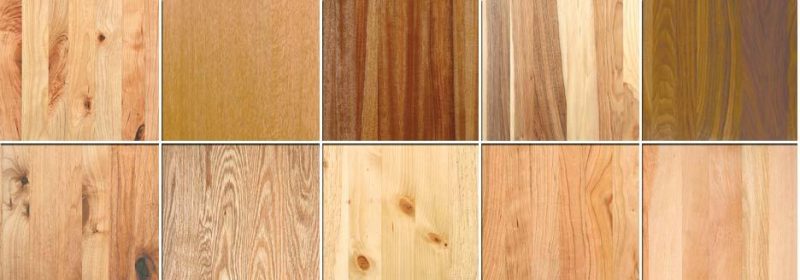
photo source: mmtoolsparts.com
There are differences in appearance between deciduous and coniferous, even if they have the same finish
To help you understand what I mean, I'll give you a few examples. Let's say the finish to be reproduced is on oak and the wood available is spruce (generally softwood).
Even if the colour is reproduced identically using a spectrophotometer, the effect will be totally different, especially in the case of the transparent finish. Oak is a darker wood, towards grey, it is hard and has pores. Spruce is more yellowish, without pores and is a softer wood.
The bath applied to the fir wood will be absorbed deeply and bring out the natural pattern of the wood, making the result very different from the oak sample. There will be no visible pores. Even if it is a uniforming stain, like the one in the pictures below, it still fails to eliminate the differences. Even if the finish is pigmented it doesn't solve the problem. Indeed, the differences will fade a little, but the end result will be just as different.
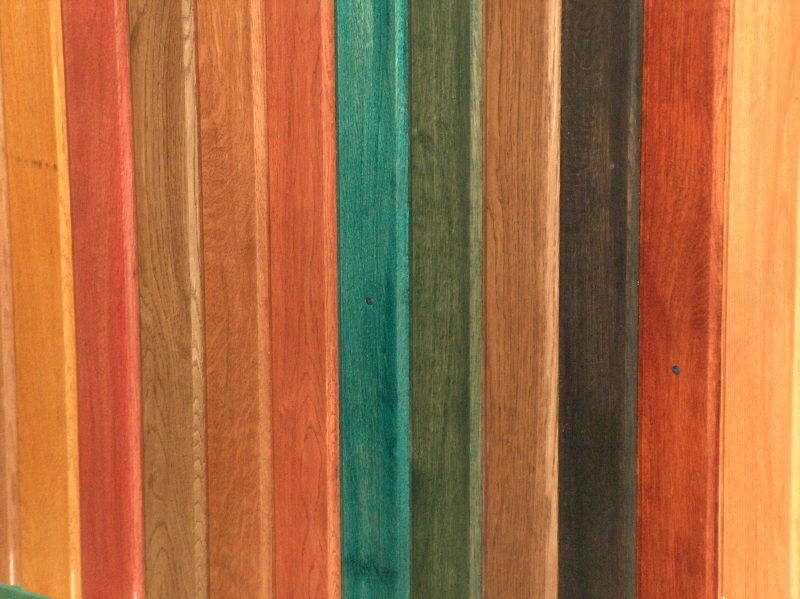
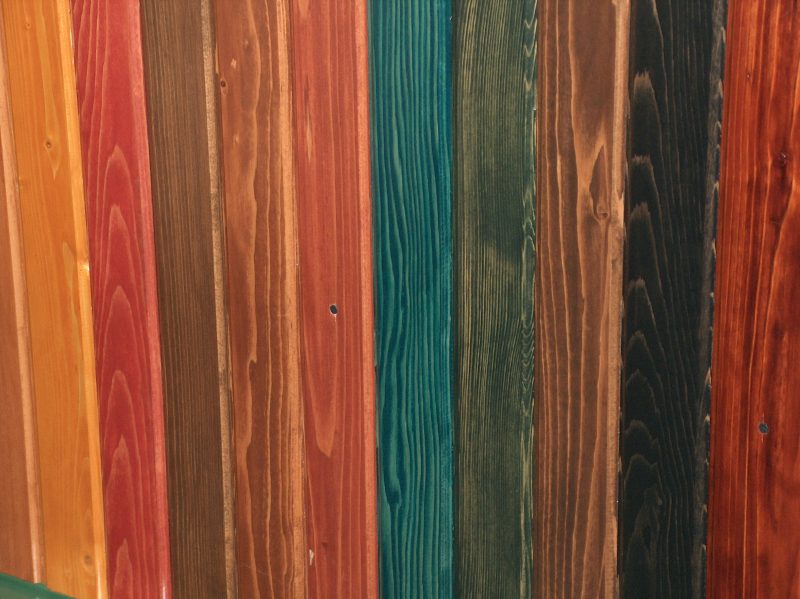
The final colour is influenced by the natural colour of the wood
If it is difficult to find wood of the same species, try copying on similar species. For example, by adjusting the colour, you can achieve the effect of the oak sample on ash or ash, i.e. hard woods with large pores mixed into the late wood area.
The colour has to be adjusted because, as you can see in the picture below, it is influenced by the natural colour of the wood. The five species of wood - oak, maple, cherry, mahogany and walnut - have the same stain. Although the berry is uniform, which mitigates the differences between the species, you can still see the difference between them.
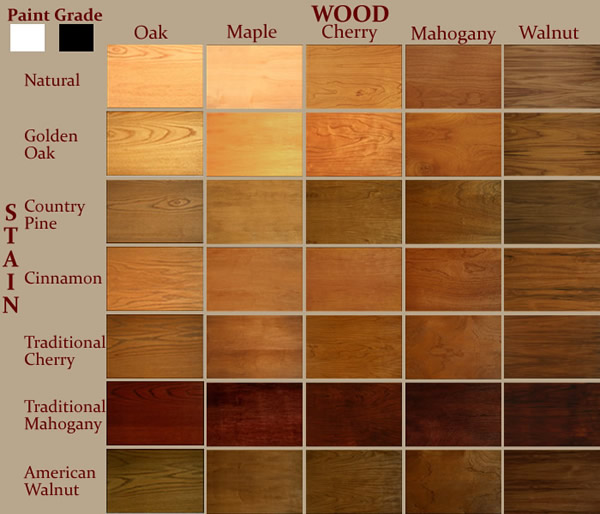
photo source: gunsbase.com
Arrangement, size and shape of pores influence the result
There are situations where the wood is hardwood, has a similar colour, has pores, but they are different. In this case it is also difficult to reproduce the finish, especially if the bath or patina marks it. This is the case with oak compared to beech. You will never be able to copy the effect of oak on beech.
Beech has small pores spread all over the surface, making a totally different pattern from oak.
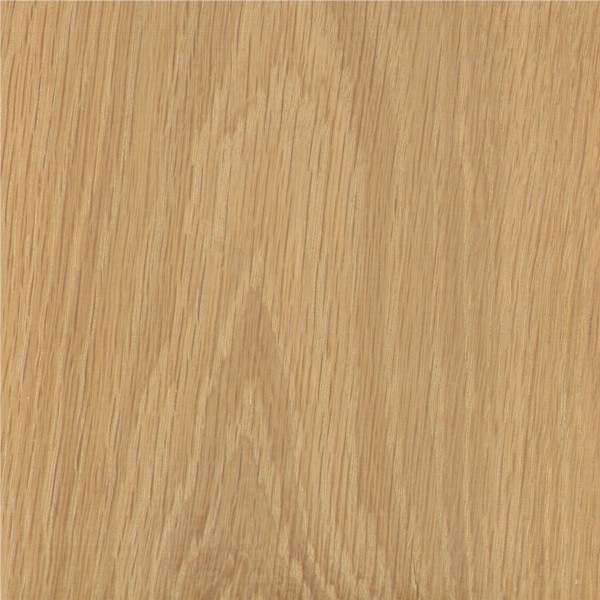
photo source: wood-database.com
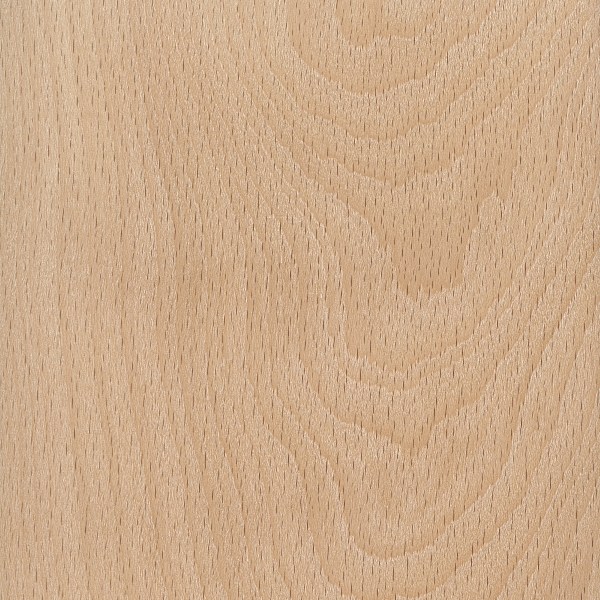
photo source: wood-database.com
Influence of the cutting method on the final appearance of the finish
Big differences can also occur using the same wood species. If the cutting was done differently, the wood will have a different natural design. Take the example of the oak tree. If the original finish is done on a tangentially cut wood (fladere), it will not be able to be reproduced on a radially cut wood (friz).
Reproduction is even more difficult if the pores are marked with patinas.
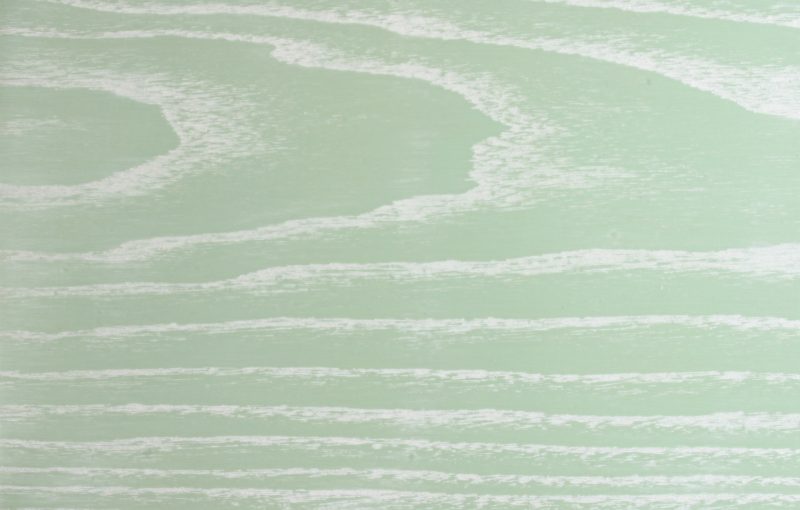
photo source: wood magazine
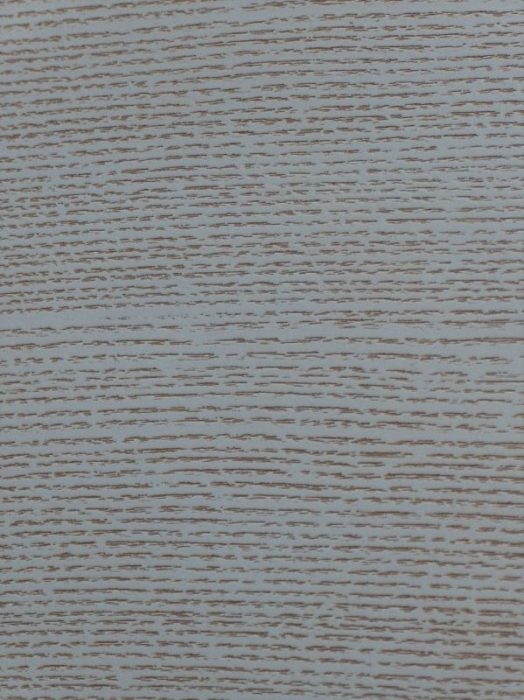
Reproduction of the effect on structured wood
If the finish to be reproduced is done on a structured wood, it must also be structured and applied. When the wood is structured, the wood is absorbed and sits differently, the sanding between layers will bring out the design differently, and the patina, if used, will have a different effect compared to a normal solid wood without structuring. With structured wood, the layers of berry and patina are seen in 3D, whereas with normal surfaces, everything happens in the plane, without the expected effect.
If the reproduction is done on veneered panel, there is no question of structuring, which is only done on solid wood or thick veneer (blinds). On veneered panel, due to the very small thickness of the veneer (aesthetic veneers), structuring cannot be done. Brushing the veneer with a wire brush will only result in a deeper scratched surface, but the finish on such a substrate will have no connection to the original one.
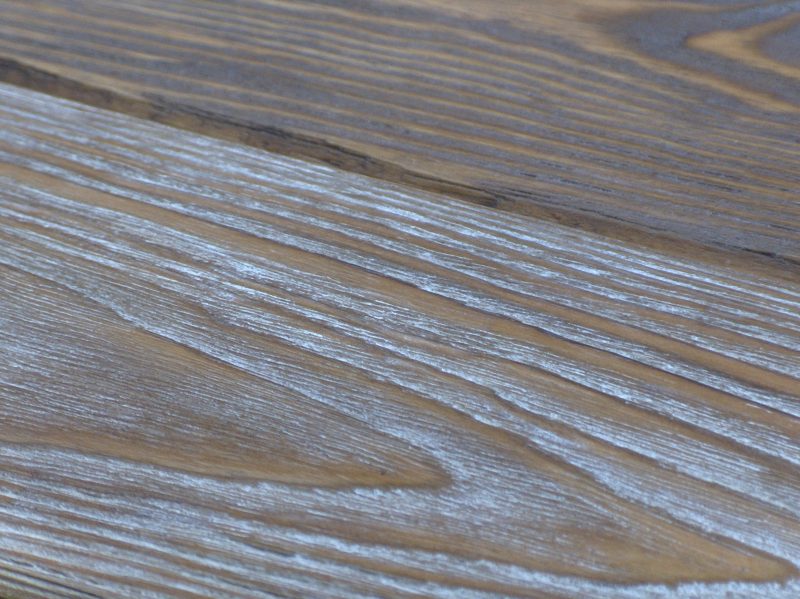
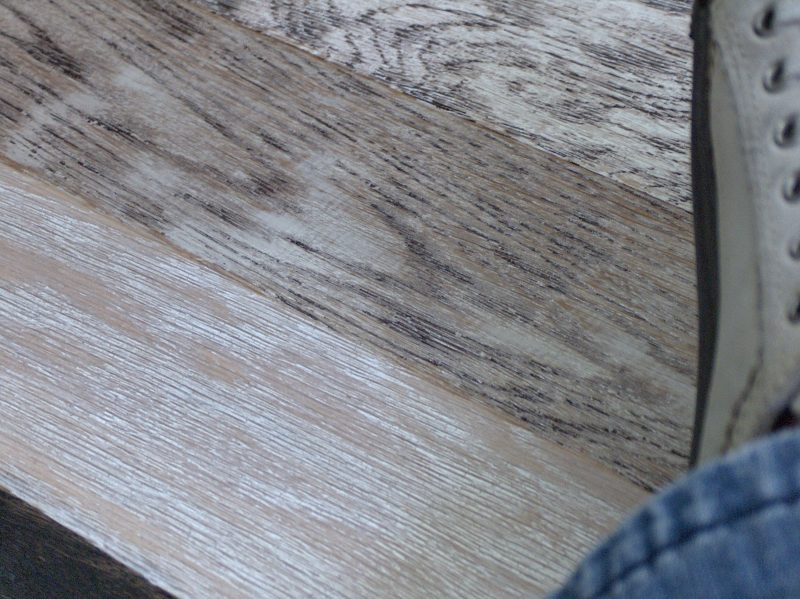
Copying the colour of laminate flooring onto wood
I gave the example at the beginning of people who want wooden stair treads to look like laminate flooring. There is always a problem here because the design has to look like a wood finish. Because what we see on laminate flooring is a drawing on a paper made by a printer. And if that drawing looks like an antiqued parquet, with patinas of overlapping colours, then it's even harder.
Such a finish can only be achieved on structured wood, and laminate flooring is straight without the slightest bump. That's why it's a good idea to tell the customer from the outset why it will be impossible to make the wooden steps look perfectly like laminate flooring.
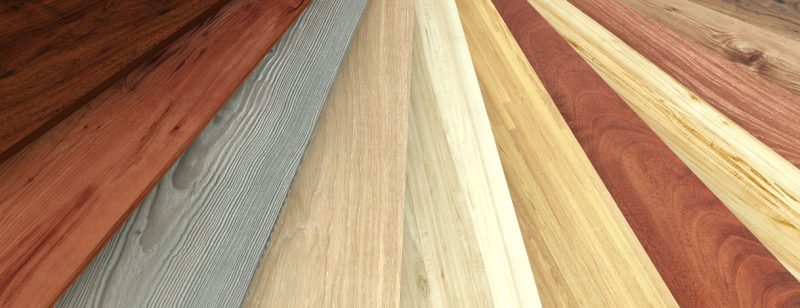
photo source: spectrumonsitesolutions.com
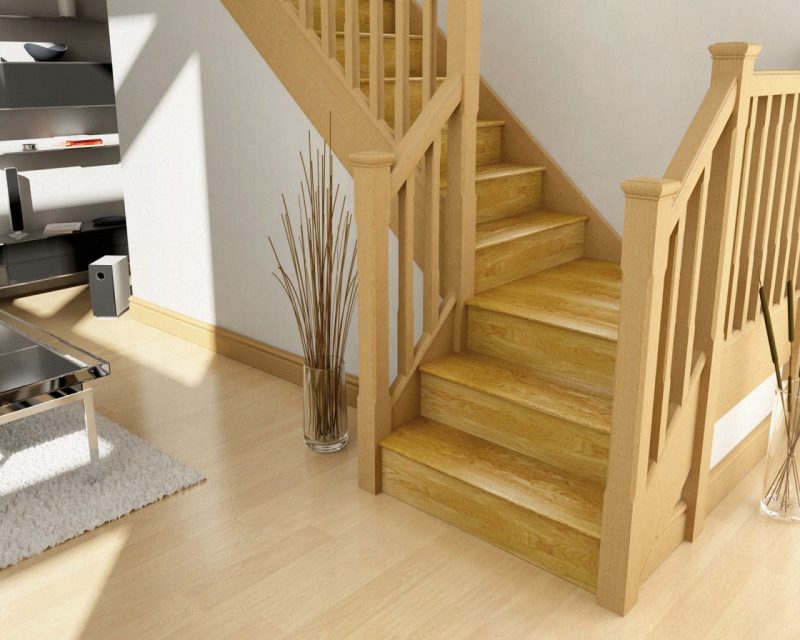
photo source: interiorpatio.com
How to copy a finish to avoid surprises
If you want to copy a finish, try first making a sample on a small piece of the wood you will be using. That way you'll know from the start what the end result will be. When I'm asked to reproduce a finish, I always say to bring pieces of the wood that will be used. Because otherwise I run the risk that the difference between what I have achieved and what will be obtained in the factory will be very big.
The reproduction of a finish is done on the same wood species, with the same cutting and preparation as the one it will be used on. Otherwise you will get something similar and not an identical effect. For those who frequently stain wood, all of the above seems self-evident. But others may not know these details. That's why it's good to be informed in advance so that there are no problems in the end.
I hope you find the above information useful. As usual, additions are welcome. And if you have any questions or queries, please leave them in the space below. I'm sure I'll reply.























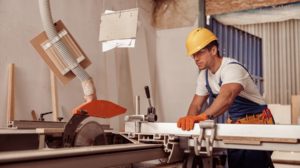





Add comment